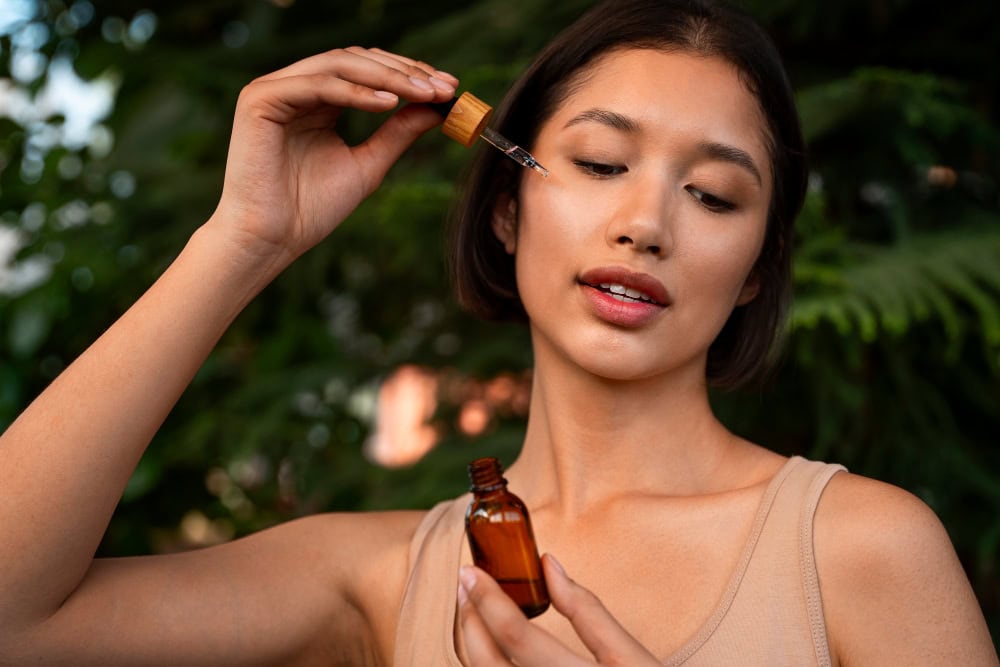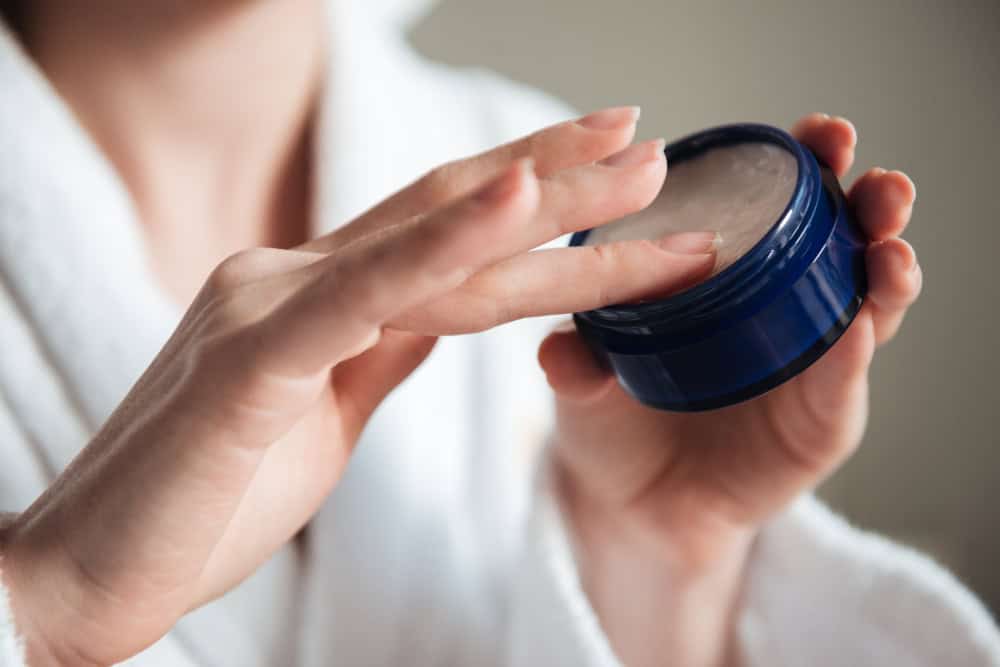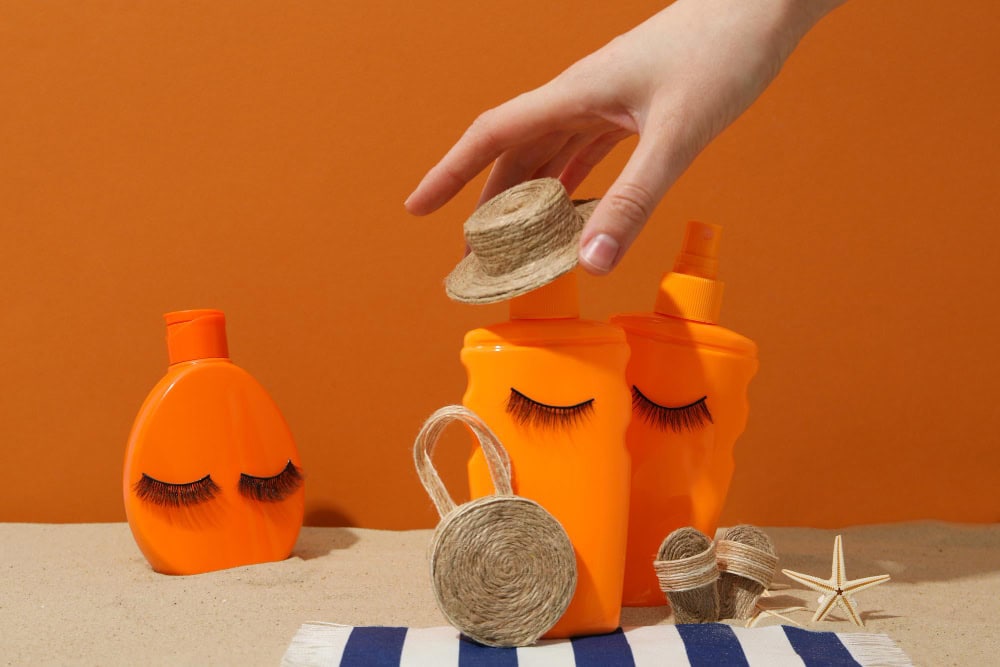
Taking care of your skin isn’t just about glowing selfies or hopping on TikTok trends, it’s about your health and confidence. The skin is your largest organ, and like any organ, it needs proper nourishment and protection. But with shelves overflowing with cleansers, toners, serums, and creams (not to mention endless “holy grails” on Instagram), it’s easy to feel lost.
Here’s the truth: the real magic lies in the ingredients. Once you know what each active ingredient does and how to use it, you unlock the secret to youthful, radiant, and problem-free skin.
Ready to become your own skincare expert? Let’s dive into the essentials, ingredient by ingredient.
1. Cleanser: Hit the Reset Button
The first step in any skincare regimen is cleansing. It removes dirt, oil, and makeup from your skin, leaving it clean and prepped for the next steps.
Use a gentle cleanser that is ideal for your skin concern, has a lower pH (less than 6), is oil-free, and is non-comedogenic, meaning it won’t clog your pores [1]. Wash your face with a cleanser twice a day, morning and night.

Experience the ultimate freshness! Say goodbye to impurities and hello to clear, luminous skin. Find a cleanser for your needs from our range of mild cleansers.
2. Toner: The Skin Balancer

While not necessary, a toner can balance your skin’s pH and get rid of any leftover oil or dirt after cleansing. It can also benefit your skin by hydrating it properly.
Look for a toner that is alcohol-free and has moisturizing components like glycerin or hyaluronic acid. After cleansing, apply it with a cotton pad by swiping it across the face and neck.
Looking for a reliable toner that delivers results? Our range of active ingredient-based and some generic toners is here to transform your skincare regimen.
3. Chemical exfoliators AHAs/BHAs:

Chemical exfoliators; AHAs (like glycolic or lactic acid) and BHAs (like salicylic acid)—are the Marie Kondo of skincare. They help your skin shed dead cells, unclog pores, and reveal smoother, brighter skin.
-Use them just 1–2 times a week at first.
-Sunscreen is non-negotiable after exfoliating.
Note- Think of AHAs as your “evening date” (they’re best used at night), while BHAs are your “daytime buddy” (oil-solvers for shiny skin).
4. Antioxidants: The Skin’s Bodyguard

a. Vitamin C: The Brightening Star
Vitamin C is one of the best skincare ingredients on the market with strong antioxidant properties. It moisturizes and brightens the skin, reduces hyperpigmentation, encourages the synthesis of collagen, and offers UV protection.
It is considered safe for use for the majority of skin types. In the morning, layer a vitamin C antioxidant serum under your moisturizer that is followed by sunscreen.
Reveal your skin’s natural brilliance with our vitamin C serums! Experience the power of antioxidants and brighten your complexion. Shop now and let your skin shine!
b. Retinol/Retinoid: The Ageless Wonder
Vitamin A in the form of retinol and retinoid helps to enhance the appearance of your skin. They can lessen the visibility of age spots, fine lines & wrinkles and increase the production of collagen [1].
Retinols also help to lessen acne and acne marks and enhance the texture of your skin [1]. However, some people may find them irritating, so it’s crucial to start with the lowest strength and use them in moderation. Use a retinol or retinoid product only at night after cleansing. Always remember to consult your doctor when using retinol/retinoid-based products.
Note: Do not mix retinol/retinoid with vitamin C or AHAs/BHAs. Use them at different times. Also, like glycolic acid, retinol/retinoid makes your skin photosensitive. Therefore, don’t forget to use sunscreen the next morning.
c. Niacinamide: The Multi-Tasker
Niacinamide, often known as vitamin B3, is an antioxidant, anti-inflammatory, and anti-aging compound. It controls the quantity of acne-causing oil, sebum, produced by the oil glands in your skin and lessens the swelling and redness brought on by acne.
Niacinamide holds moisture and softens and illuminates the skin by encapsulating water molecules. Additionally, it can also help to reduce hyperpigmentation and increase keratin (the protein that makes up the skin, hair, and nails) production [1].
Use it during the day and at night as it is compatible with other active substances. Layer it based on its consistency and pH.
Note: Do not mix niacinamide and vitamin C as both are powerful antioxidants.
Enhance your skin’s natural beauty with this versatile ingredient. Fade dark spots, regulate oil production, and improve overall skin texture. Elevate your self-care game with our niacinamide serums.
5. Eye cream: Your Secret Weapon Against Tired Eyes

Eye creams are created specifically to care for the sensitive skin around your eyes. They can aid in lessening the visibility of fine wrinkles, puffiness, and dark circles.
Find an eye cream that includes ingredients like vitamin C or caffeine [2]. Use them before moisturizing, as they are mainly thin in consistency.
Give your eyes the love and care they deserve with our targeted eye creams. Restore youthfulness, diminish puffiness, and awaken your natural radiance.
6. Moisturizer: The Lock and Seal

A moisturizer is a paramount component of any skincare regimen. It helps to keep your skin hydrated.
Look for a moisturizer that is appropriate for your skin type, has moisturizing components like hyaluronic acid or glycerin, and is oil-free & non-comedogenic. Apply it after using your antioxidant products.
Experience the ultimate hydration for every skin type! Our versatile range of moisturizers caters to all skin types, providing the perfect balance of nourishment and protection.
7. Sunscreen: The Non-Negotiable
It is necessary to shield your face and body from the sun’s harmful UV rays, and this makes sunscreen the most important skincare product you can use. It also aids in preventing early aging signs, skin cancer, and other skin issues.
Look for a broad-spectrum sunscreen that offers protection from UVA and UVB radiation and has an SPF of 30 or higher. Apply it daily, even on cloudy days or during winter, as the last step of your skincare regime during day time.
Note: Do not mix SPF with makeup or moisturizers. Use it as a single layer to preserve the protective factors.
Embrace natural sun protection with our mineral- and chemical-based sunscreens! Choose skincare that cares. Shop now and make sun protection a top priority in your daily routine!
How to layer these products like a pro?
Morning (AM) Regime:
Step 1: Cleanse- Use a mild cleanser and start with a clean complexion[3].
Step 2: Tone- Prep, hydrate, and balance your skin’s pH by using a toner.
Step 3: Treat- Use serums like antioxidants to correct skin concerns and protect skin from environmental stresses by creating a barrier layer on the skin.
Step 4: Eye cream- Depuff tired eyes and minimize dark circles by using caffeine- or active ingredient-based eye creams.
Step 5: Moisturize- Hydrate and lock all the ingredients in their place by using a moisturizer. Use a hyaluronic acid- or glycerin-based moisturizer if you have dry skin or a salicylic acid-based product if you have oily skin[4].
Step 6: Sunscreen- Use a broad-spectrum sunscreen with at least 30 SPF and protect the skin from harmful sun radiation. *If you are using a chemical sunscreen, use it before the moisturizer, as it needs to penetrate the skin to provide protection.
Night (PM) Regime:
Step 1: Double Cleanse- Remove makeup using an oil-based makeup remover and then use a cleanser to remove all the dirt and impurities.
Step 2: Exfoliate- Use a chemical exfoliator like glycolic acid or lactic acid 1 to 3 times a week to promote cell turnover and renewal.
Step 3: Mask (optional)- Use a sheet mask once or twice a week to deliver essential vitamins and nutrients to the skin.
Step 4: Treat- Use retinol or retinoid once every other day until you build tolerance and then every day to treat acne marks, increase cell turnover, and boost collagen production.
Step 5: Eye cream- Plump, hydrate, and minimize the appearance of dark circles by using an active ingredient-based eye cream.
Step 6: Night cream- Use a moisturizer to replenish hydration, undo the damage, and lock all the applied ingredients in the skin.
Things to remember before including active ingredients in your skincare routine:
1. There is no hard and fast rule as to how many active ingredients you can use, but it’s important to remember not to go from zero to 100 at once. Start incorporating them gradually.
2. Not all active ingredients can be combined together. Consult your doctor to know which ingredients you should use together to get the most benefits out of them.
3. Remember to layer the ingredients according to their pH, i.e., apply products with a lower pH first and then layer them with the products that are high in pH.
4. Along with pH, consider the consistency and thickness of the products. Use products with thin consistency, like toners and serums, before and then top them with products that are thicker in consistency, like moisturizer and sunscreen.
5. Active ingredients like vitamin C, retinol/retinoids, and AHAs/BHAs have some side effects that go away after some time with continuous use. Consult your dermatologist if the symptoms don’t subside.
6. Always do a patch test before applying any new product.
7. Not all products have the same effect on everybody. Test and check what works for you according to your skin condition and type.
Remember! Each person’s skin is different, so it could take some trial and error to find the correct mixture of components. With patience and consistency, you can discover the ingredients that work best for you and unlock the true potential of your skin.
FAQs
Q1. Do I really need all these skincare products in my routine?
Not necessarily! Skincare is not “one-size-fits-all.” A simple routine with cleanser, moisturizer, and sunscreen is enough for many people. You can add active ingredients like Vitamin C, AHAs, or retinol based on your specific skin concerns.
Q2. Can I use Vitamin C and Retinol together?
No. Both are powerful actives and can irritate if layered together. Use Vitamin C in your morning routine and Retinol at night for the best results.
Q3. I have sensitive skin. Which active ingredient is safest to start with?
Niacinamide is a gentle yet effective ingredient that works well for sensitive skin. It soothes redness, strengthens the skin barrier, and adds hydration without irritation.
Q4. How long does it take to see results from active ingredients?
Patience is key! Most active ingredients show visible results within 6–12 weeks of consistent use. Always introduce one product at a time so your skin can adapt.
Q5. Should I wear sunscreen even if I stay indoors?
Yes! UV rays penetrate through windows and can cause premature aging, dark spots, and skin damage. Sunscreen is a must, even indoors or on cloudy days.
Q6. Can I exfoliate every day?
No. Over-exfoliation can damage your skin barrier and irritate it. Chemical exfoliants like AHAs/BHAs should typically be used only 1–3 times a week, depending on your skin type.
Q7. What’s the biggest skincare mistake beginners make?
Jumping into too many activities at once! Always start slow, do patch tests, and let your skin adjust before adding new products.
Recommended Reads
Forget Coffee, This Japanese Drink Is Your New Secret to That Glass Skin Glow
How to Choose the Right Sunscreen as per Your Skin Type?
(The article is written by Mantasha, Executive, Clinical Health & Content, and reviewed by Monalisa Deka, Senior Health Content Editor)
References
1. Wong M. All About Cleansing & How to Choose a Gentle Cleanser [Internet]. Lab Muffin Beauty Science; 2022 Jan. 10 [accessed 2023 Jul. 2]. Available from: https://labmuffin.com/how-to-choose-gentle-cleanser/
2. How to correctly layer your skincare products, according to the experts [Internet]. Curology Team; 2022 Oct. 27 [accessed 2023 Jul. 02]. Available from: https://curology.com/blog/what-order-to-apply-skincare-products/
3. How to Layer Skincare Products [Internet]. Dermatology and Cutaneous Surgery Institute; 2022 Nov. 30 [accessed 2023 Jul. 02]. Available from: https://www.mydcsi.com/2022/11/30/how-to-layer-skincare-products/
4. We Asked a Skincare Specialist How to Layer Skin Care Products the Right Way [Internet]. Skin Cancer & Dermatology Institute [accessed 2023 Jul. 02]. Available from: https://skincancerderm.com/we-asked-a-skin-care-specialist-how-to-layer-skin-care-products-the-right-way/